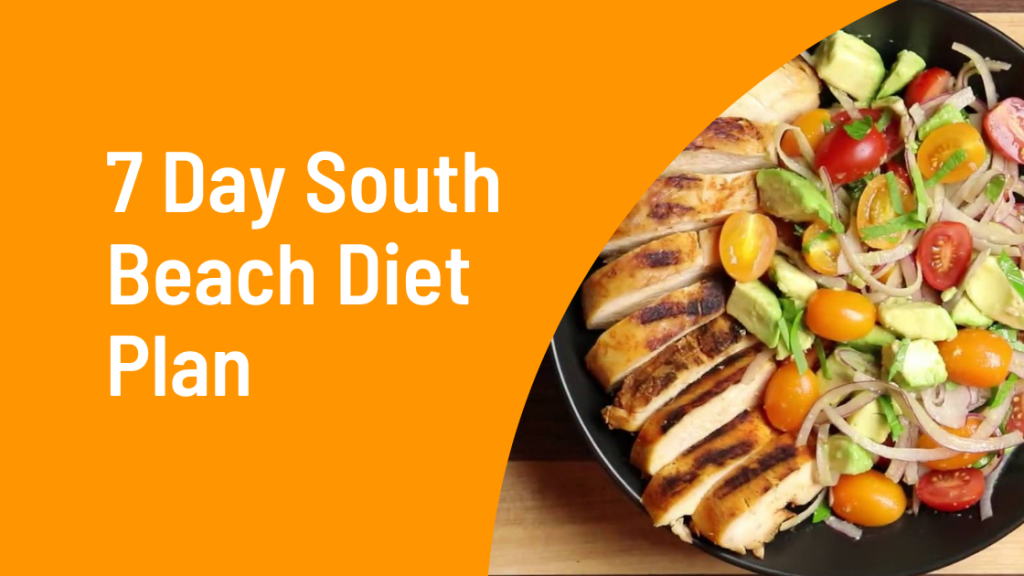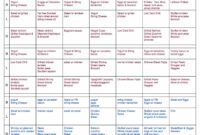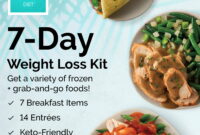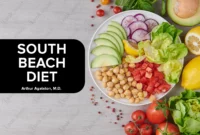What is the South Beach Diet Plan? This popular diet plan offers a unique approach to weight loss, focusing on a phased approach that emphasizes healthy fats and limits refined carbohydrates. Unlike restrictive diets that eliminate entire food groups, the South Beach Diet prioritizes nutrient-rich foods while gradually reintroducing certain carbohydrates. This approach aims for sustainable weight management and improved overall health, making it a compelling option for those seeking a balanced and effective diet strategy.
The diet is divided into three phases: the initial phase focuses on eliminating unhealthy fats and simple carbohydrates to jumpstart weight loss. The second phase gradually reintroduces healthy carbohydrates, while the third phase emphasizes maintaining a healthy lifestyle long-term. Each phase includes specific guidelines on food choices and portion sizes, providing a structured framework for successful weight management.
Introduction to the South Beach Diet
The South Beach Diet, created by cardiologist Arthur Agatston, is a dietary approach emphasizing gradual weight loss through controlled carbohydrate intake and a focus on healthy fats and lean proteins. Unlike many restrictive diets, it prioritizes sustainable lifestyle changes rather than quick fixes, aiming to improve overall health and well-being alongside weight management. The diet emphasizes the quality of carbohydrates consumed, rather than simply restricting their quantity.
The core principles revolve around minimizing the consumption of simple carbohydrates (sugars and refined grains) which can lead to rapid spikes in blood sugar levels, promoting fat storage. Instead, the diet promotes the consumption of complex carbohydrates (such as whole grains, fruits, and vegetables), healthy fats (such as olive oil, avocados, and nuts), and lean proteins (such as fish, poultry, and beans). This balanced approach aims to stabilize blood sugar levels, reduce cravings, and promote sustained weight loss.
Phases of the South Beach Diet
The South Beach Diet is structured into three phases, each with progressively increasing dietary flexibility. This phased approach helps individuals gradually adjust to the dietary changes and maintain long-term adherence.
Phase 1, the initial two-week period, is the most restrictive, eliminating most simple carbohydrates, sugary drinks, and unhealthy fats. This phase focuses on stabilizing blood sugar levels and jumpstarting weight loss. Permitted foods include lean proteins, non-starchy vegetables, and healthy fats. The goal is to break unhealthy eating habits and establish a foundation for sustainable changes.
Phase 2, which can last for several months, gradually reintroduces healthy carbohydrates like whole grains and fruits. This phase continues to emphasize lean proteins and healthy fats, but allows for a wider variety of food choices. The rate of carbohydrate reintroduction is individualized and depends on individual progress and response. The aim here is to find a sustainable balance of macronutrients that supports weight maintenance.
Phase 3, the maintenance phase, is a long-term lifestyle plan that focuses on maintaining a healthy weight and continuing to make healthy food choices. It incorporates flexible meal planning and emphasizes mindful eating habits to prevent weight regain. This phase encourages individuals to maintain the healthy eating patterns established during the previous phases, adjusting as needed to meet their individual needs and preferences.
Comparison with Other Popular Diets
The South Beach Diet differs significantly from other popular diets in its approach to carbohydrates. Unlike very low-carbohydrate diets like keto, which severely restrict carbohydrate intake, the South Beach Diet focuses on selecting the *type* of carbohydrates consumed. It emphasizes complex carbohydrates over simple carbohydrates, while ketogenic diets often exclude almost all carbohydrates. Compared to diets like Weight Watchers, which focus on calorie counting and point systems, the South Beach Diet prioritizes the quality of food consumed over mere calorie restriction. This makes it a more nuanced approach to weight management, focusing on overall dietary quality and long-term lifestyle changes rather than short-term weight loss. It avoids the restrictive nature of some diets and allows for greater flexibility in food choices as the individual progresses through the phases.
Phase 2: Continuing Weight Loss
Phase 2 of the South Beach Diet marks a transition from the initial strict restrictions of Phase 1 to a more sustainable, long-term approach to weight management. This phase focuses on gradually reintroducing certain foods while maintaining healthy eating habits established in the first phase. The goal is to continue weight loss at a steady pace while expanding your dietary options and building a foundation for lifelong healthy eating.
This phase emphasizes mindful eating and portion control to prevent weight regain. It’s a period of learning to balance healthy choices with occasional indulgences, paving the way for a flexible and enjoyable diet that supports your weight loss goals. You’ll gradually incorporate more foods back into your diet, focusing on nutrient-rich options and learning to manage portions effectively.
Gradual Reintroduction of Foods
Phase 2 allows for the reintroduction of some healthy fats and carbohydrates that were restricted in Phase 1. This is done incrementally to monitor your body’s response and ensure you don’t experience unwanted weight gain. Foods like whole grains (in moderation), nuts, and seeds are gradually added back into the diet. However, high-glycemic index carbohydrates and unhealthy fats remain largely restricted. The emphasis remains on lean protein, low-glycemic vegetables, and healthy fats. This careful reintroduction helps prevent sudden spikes in blood sugar and insulin, crucial for continued weight loss and preventing weight regain.
Portion Control and Healthy Eating Habits
Maintaining portion control is crucial throughout Phase 2. Using smaller plates, measuring food portions, and being mindful of serving sizes helps to prevent overeating. Regular meal timing and avoiding snacking between meals are also important. Paying attention to hunger and fullness cues is key – eating until comfortably satisfied, not stuffed. Combining protein and fiber-rich foods at each meal helps promote satiety and prevents overeating. For example, a lunch of grilled chicken salad with mixed greens and a small amount of healthy dressing is far more satisfying than a sugary snack. Regular exercise also complements these dietary changes and enhances overall health and well-being.
Sample Weekly Meal Plan
A sample weekly meal plan for Phase 2 should incorporate a variety of foods while maintaining portion control and focusing on nutrient-rich options. Remember to adjust portion sizes based on your individual caloric needs and activity level.
- Monday: Breakfast: Oatmeal with berries and nuts; Lunch: Grilled salmon with steamed broccoli and quinoa; Dinner: Chicken stir-fry with brown rice and plenty of vegetables.
- Tuesday: Breakfast: Scrambled eggs with spinach and whole-wheat toast; Lunch: Turkey breast salad sandwich on whole-wheat bread; Dinner: Lean ground beef with sweet potato and green beans.
- Wednesday: Breakfast: Greek yogurt with fruit and a sprinkle of granola; Lunch: Leftover chicken stir-fry; Dinner: Baked cod with roasted asparagus and a small baked potato.
- Thursday: Breakfast: Smoothie with protein powder, spinach, and berries; Lunch: Tuna salad with celery and whole-wheat crackers; Dinner: Chicken breast with steamed green beans and a small portion of brown rice.
- Friday: Breakfast: Whole-wheat pancakes with berries and a small amount of syrup; Lunch: Leftover baked cod and asparagus; Dinner: Shrimp scampi with zucchini noodles.
- Saturday: Breakfast: Omelet with vegetables and cheese; Lunch: Salad with grilled chicken or fish; Dinner: Lean pork tenderloin with roasted vegetables.
- Sunday: Breakfast: French toast made with whole-wheat bread; Lunch: Leftover pork tenderloin and vegetables; Dinner: Chicken and vegetable skewers.
Potential Benefits and Risks
The South Beach Diet, like any weight-loss plan, presents both potential benefits and drawbacks. Understanding these aspects is crucial for making an informed decision about whether this diet is suitable for individual needs and health circumstances. A balanced perspective, considering both the positive and negative aspects, is essential for responsible dietary choices.
The South Beach Diet’s emphasis on low-glycemic foods and healthy fats can lead to several positive outcomes. However, it’s vital to be aware of potential downsides and to consult a healthcare professional before embarking on this or any other restrictive diet.
Potential Health Benefits
Following the South Beach Diet may lead to several positive health outcomes. Weight loss, often a primary goal, is frequently achieved due to the diet’s focus on reducing refined carbohydrates and promoting satiety. Furthermore, improved blood sugar control is often observed, beneficial for individuals with prediabetes or type 2 diabetes. The emphasis on healthy fats and lean proteins can contribute to improved cholesterol levels and overall cardiovascular health. Finally, some individuals report increased energy levels and improved mood after switching to the South Beach Diet’s dietary pattern. These benefits, however, are not guaranteed and vary significantly depending on individual factors such as adherence to the plan and underlying health conditions.
Potential Risks and Side Effects
While the South Beach Diet offers potential benefits, it also carries risks. One significant concern is the potential for nutrient deficiencies. Strict adherence to the initial phases can lead to inadequate intake of certain vitamins and minerals if not carefully planned. For example, limiting fruits and some vegetables in the early phases might reduce the intake of essential vitamins and fiber. Another risk is the potential for the diet to trigger or worsen existing digestive issues in some individuals due to the restriction of certain food groups. Furthermore, the rapid weight loss experienced in the initial phase might lead to fatigue, headaches, and dizziness in some people. Finally, the restrictive nature of the diet can lead to feelings of deprivation and make long-term adherence challenging. A well-planned approach, ideally with guidance from a registered dietitian or healthcare professional, can mitigate these risks.
Comparison with Other Weight Loss Methods
Compared to other weight loss methods, the South Beach Diet distinguishes itself through its emphasis on specific macronutrient ratios and the phased approach. Unlike some low-carb diets that severely restrict all carbohydrates, the South Beach Diet allows for the gradual reintroduction of certain healthy carbohydrates. This approach differs from low-fat diets, which often prioritize carbohydrates and may not be as effective for weight management in all individuals. Compared to fad diets that often promise quick results but lack long-term sustainability, the South Beach Diet offers a more structured and potentially sustainable approach. However, its effectiveness, like any other diet, depends heavily on individual adherence and overall lifestyle factors. The success rate varies depending on factors such as commitment, genetics, and the presence of underlying health conditions. It’s crucial to note that no single diet works for everyone, and individualized approaches are often most effective.
Epilogue
The South Beach Diet, with its phased approach and focus on nutrient-rich foods, provides a comprehensive strategy for sustainable weight loss and improved well-being. While individual results may vary, the emphasis on healthy eating habits and lifestyle changes makes it a viable option for those seeking long-term health benefits. By understanding the principles of each phase and adhering to the guidelines, individuals can effectively manage their weight and improve their overall health, ultimately achieving their weight management goals.




